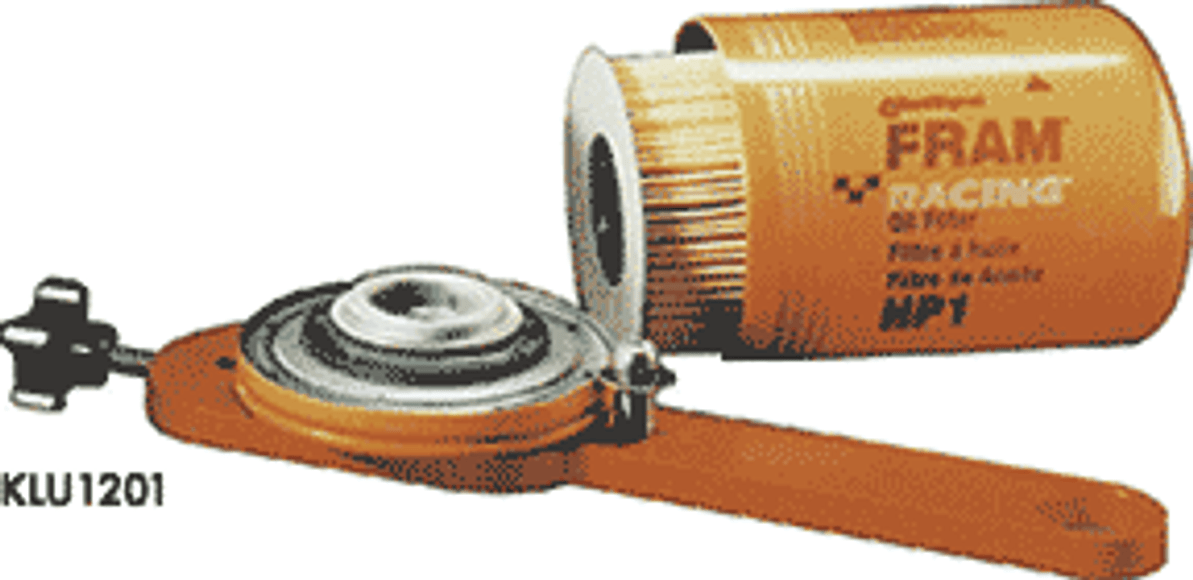Oil Filter Inspection
Preventative maintenance is typically a program that applies to the daily driver, however, it should also apply to the race car. Checking valve lash, changing engine oil, inspecting brakes and suspension components, cleaning fuel filters, servicing differentials, etc. should all be part of a preventative maintenance program. Periodic oil filter inspections should be on the list as well.
Typically performed during an oil change or anytime engine condition or performance is in question, oil filter inspection is a great troubleshooting tool as well. Oil filter inspection begins by simply removing the filter from the engine, placing it in a pan and letting it drain for 10-15 minutes prior to being cut. An Oil Filter Inspection Tool (KRC1201R), offered by KRC Racing, is recommended when performing this task. While it may be tempting to grab a hacksaw, it's best to use a specialized tool since it cuts clean, similar to a can opener, without creating metal debris that may be confused with engine wear. Follow by clamping the tool in a vise and placing the filter so that the outer housing may be cut as the thumb screw is tightened. Slowly rotate the filter by hand while tightening the thumbscrew until the filter has been cut all the way through.
Once the housing has been cut completely open, remove the filter element. Continue by using a utility knife to carefully cut the end caps off of the element so that the "pressure side" of each pleat may be examined for debris. Keep in mind that all things mechanical wear and there will always be a few tiny pieces of bearing material, silicone sealer, etc. lodged in the element. Most engine wear found is typically no bigger than a pencil head. If the engine has just been rebuilt, expect to find a generous amount of assembly lubricant in the filter as well. Again, no cause for concern. On the other hand, if the pleats contain a generous amount of what appears to be bearing material or other metal fragments, further investigation may be in order. Removing the oil pan and inspecting the bearings then becomes the next step.
Recent Posts
-
Avoiding Charging System Problems
A properly functioning charging system is critical for a vehicle’s operation.Often taken for granted …Jul 13th 2020 -
Solving Ignition Problems: The Path of Least Resistance
Ignition problems can be a major source of performance issues, but are often one of the easiest chal …Mar 15th 2020 -
Spring Maintenance Checklist to Keep Your Race or Performance Car Running Great
If you drove your race or performance car into the garage last fall and haven’t touched it since, it …Mar 10th 2020


